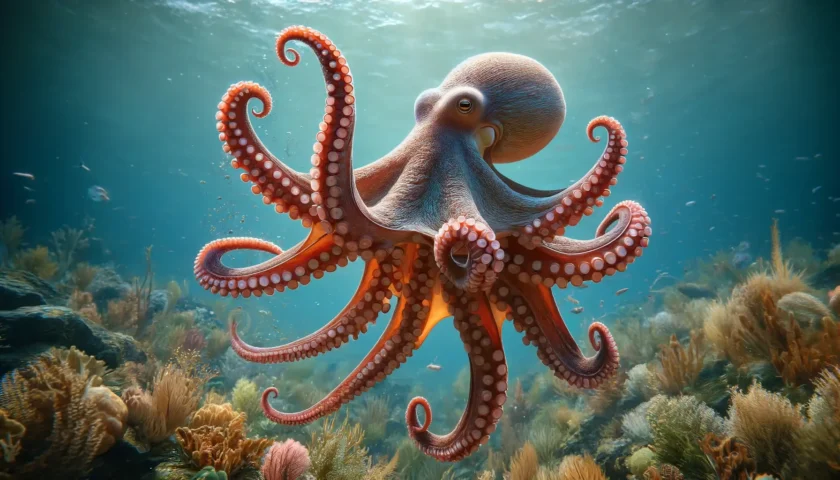The Fascinating World of the Octopus: An In-Depth Look
Introduction to the Octopus
Octopuses are incredible marine animals known for their intelligence, unique appearance, and remarkable abilities. These fascinating creatures belong to the class Cephalopoda, which also includes squid, cuttlefish, and nautiluses. With over 300 species, octopuses inhabit diverse marine environments, from coral reefs to the deep sea.

Physical Characteristics
Octopuses have distinctive physical features that set them apart from other marine animals. Their soft, flexible bodies lack internal skeletons, allowing them to squeeze through incredibly small spaces. They possess eight long arms lined with suckers, which they use for locomotion, capturing prey, and interacting with their environment. Octopuses are also known for their large eyes, which provide excellent vision in low-light conditions.
Intelligent Behavior
Octopuses are renowned for their intelligence and problem-solving skills. They have large brains relative to their body size and exhibit behaviors such as using tools, navigating mazes, and escaping from enclosures. Some species have been observed opening jars to access food, showcasing their remarkable cognitive abilities.

Camouflage and Defense Mechanisms
One of the most extraordinary abilities of octopuses is their capacity for camouflage. They can change the color, texture, and pattern of their skin to blend seamlessly with their surroundings, making them nearly invisible to predators and prey. This ability is facilitated by specialized cells in their skin called chromatophores, iridophores, and leucophores. Additionally, octopuses can eject ink to create a smokescreen, allowing them to escape from predators.
Feeding Habits
Octopuses are carnivorous and have a varied diet that includes crustaceans, mollusks, and small fish. They use their strong, beak-like jaws to break through the hard shells of their prey. Some species also produce venom to subdue their prey, injecting it through their saliva. Their flexible arms, equipped with powerful suckers, are essential tools for capturing and manipulating food.
Reproduction and Lifespan
The reproductive process of octopuses is both fascinating and unique. During mating, the male uses a specialized arm called a hectocotylus to transfer spermatophores to the female. After fertilization, the female lays thousands of eggs and meticulously cares for them until they hatch. Unfortunately, both males and females typically die shortly after reproduction. Most octopuses have relatively short lifespans, ranging from one to five years, depending on the species.

Species Spotlight: The Common Octopus
The common octopus (Octopus vulgaris) is one of the most well-known and studied species. It is found in various marine environments, including the Mediterranean Sea and the Atlantic Ocean. This species is particularly noted for its intelligence, adaptability, and impressive camouflage abilities.
Conclusion
Octopuses are truly remarkable creatures that captivate scientists and marine enthusiasts alike. Their unique physical characteristics, intelligence, and behaviors make them a subject of endless fascination. By understanding and appreciating these incredible animals, we can further our knowledge of marine ecosystems and the extraordinary diversity of life within them.







